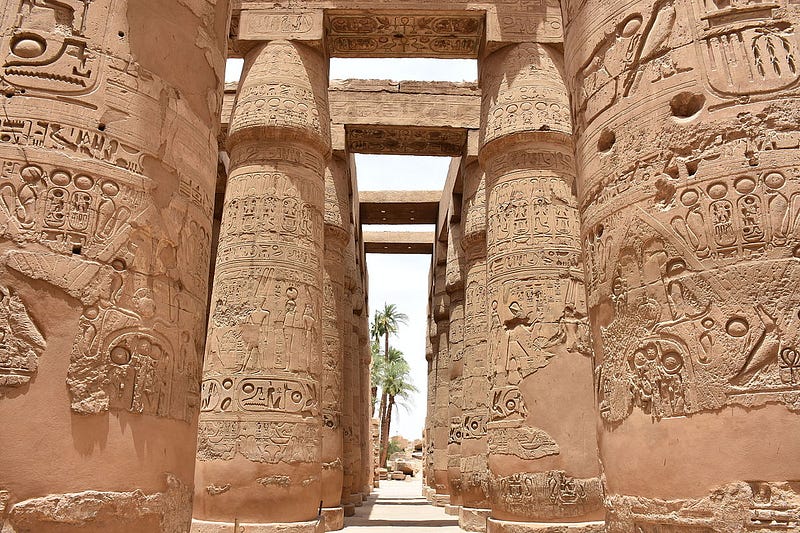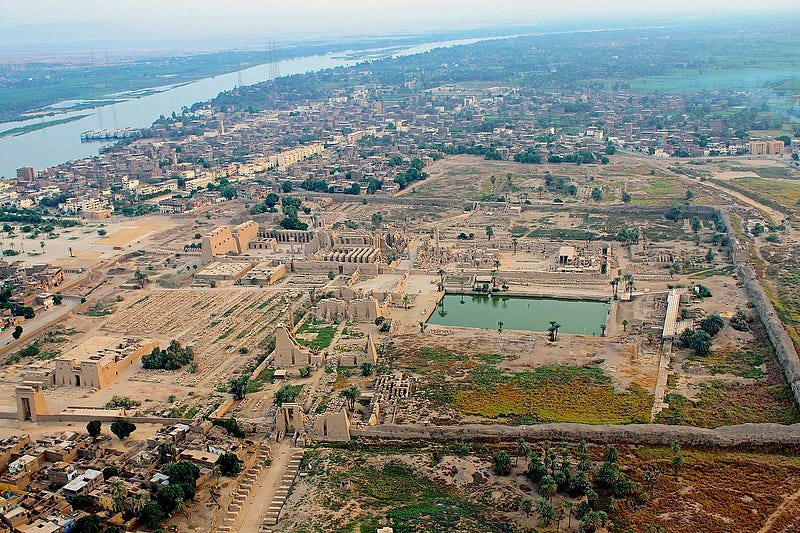Restoration Success: Reviving Egypt's Iconic Great Hypostyle Hall
Written on
Chapter 1: The Great Hypostyle Hall's Revival
The Great Hypostyle Hall within the Karnak temple complex has been restored to its magnificent state, showcasing the vibrant polychrome on its ancient bas-reliefs.

This remarkable site is one of Egypt's major landmarks, alongside the Giza pyramids and the Abu Simbel temple. Located in modern Luxor, Karnak is the largest temple complex ever constructed, spanning over 100 hectares. It served as the most significant sanctuary in ancient Egypt, dedicated to the worship of deities.
Restoration Efforts in Karnak
The Egyptian Ministry of Tourism and Antiquities has announced the nearing completion of a substantial restoration project at Karnak.
“The restoration of the Great Hypostyle Hall is among the most significant conservation initiatives in our nation. This project has been entirely executed by an Egyptian team,” the ministry stated. Current reports indicate that the work is 95% complete.
The restoration team comprises young conservators from the Supreme Council of Antiquities (SCA), alongside graduates from universities in Luxor and South Valley and the Luxor Restoration Institute. Their meticulous work involved cleaning centuries of accumulated debris, such as sand, dust, and bird droppings, following international conservation standards.
“For the first time, visitors to the Great Hypostyle Hall will have the opportunity to appreciate its original appearance,” said Mostafa Waziry, head of the SCA. The conservation efforts began in July 2021, focusing on 28 of the 134 columns.
The Historic Temple of Karnak
The Karnak temple boasts a rich history that predates even the grand Gothic cathedrals and the Pyramid of Cheops. This extensive temple complex includes numerous chapels and sanctuaries, with initial constructions dating back to the Middle Kingdom, around 2055 to 1650 BCE.
The temple underwent continuous expansion and renovation until the Roman period (4th century CE), although most of the structures were built during the New Kingdom (1550–1060 BCE), marking the pinnacle of ancient Thebes.

The temple is divided into three primary sections, each dedicated to a distinct deity: Amon (the central and most significant section), Chonsu, and Mut. The layout of the sanctuaries is based on two intersecting axes — one extending east to west towards the Nile, and the other crossing it at right angles.
Amon’s Complex and the Great Hypostyle Hall
Visitors primarily explore the area dedicated to Amon, one of Egypt's most revered gods. This section is vast, requiring several hours to fully appreciate its features. Among these is the Great Hypostyle Hall, which boasts 134 papyrus-shaped stone columns, standing 15 meters tall, with 12 central columns reaching heights of 21 meters.
The construction of this hall spanned several decades, culminating during the reign of the renowned Pharaoh Ramesses II. The hall covers an area of half a hectare. However, by the late 19th century, it lay in ruins, with many columns either toppled or leaning. Reconstruction efforts commenced in 1889 and lasted for several decades. Thus, the recent completion of the conservation of the bas-reliefs is significant, albeit cosmetic in comparison to the extensive restorations undertaken a century ago.
The Discovery of an Anomalous Celestial Object in the Milky Way
About 40,000 light-years from our Sun lies a vast cluster of stars, forming a globular group of hundreds of thousands of suns...
Important Notice to Our Readers
As creators on Medium.com, we receive minimal compensation for our contributions. If you appreciate my articles, please consider supporting me on my “Buy Me a Coffee” page. Your small donations can significantly aid my efforts in producing quality content. Thank you for your generosity!


Video Insertion
The first video, "Scientists Finally Opened The Secret Chamber Inside Egypt's Great Pyramid," explores the recent discoveries within Egypt's iconic pyramids, offering insight into their historical significance.
The second video, "Great Sphinx LOST Temple: NEW Virtual 3D Reconstruction | Part 2 | Ancient Architects," presents a new virtual reconstruction of the Great Sphinx and its surrounding temple, highlighting ancient architectural marvels.